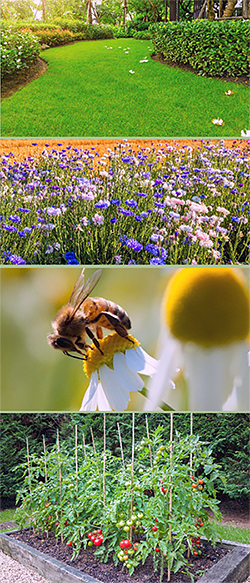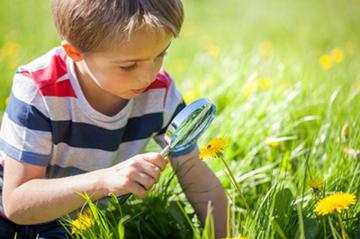Biodiversity Experiment
Biodiversity describes the different kinds of organisms found in an area. Scientists use biodiversity to measure the health of a particular ecosystem or habitat. For example, a pond with lily pads, aquatic grasses, insects, frogs, fish, and birds has a high biodiversity and would be considered a healthy ecosystem. The many kinds of plants found in this healthy pond provide food and shelter for different aquatic insects and small animals, which provide food for predators such as large fish and birds. Lowering the biodiversity of this pond by removing some of the plants or animals could harm all the other living things in this pond. In agriculture, high plant biodiversity (such as many kinds of flowering plants) around gardens or within orchards provide food and shelter for predators and parasitoids, which can control insect pests without the use of insecticides.
 About the Experiment
About the Experiment
It's time to get your hands dirty like a scientist! Try this experiment to measure biodiversity around your yard or school and see how biodiversity at the plant level affects biodiversity at the insect level.
 |
Details
|
 |
|
 |
|
 What You'll Need
What You'll Need
- Pencil and paper
- Access to areas with two different soil types (garden, backyard, lawn, grass, dirt)
- String
 Let's Do This!
Let's Do This!
Warning: Be aware that some insects may sting. Younger explorers should conduct this experiment with an adult.

- Use the string to create a 3-foot by 3-foot boundary around an outdoor area, such as a garden, lawn, grass, tree, etc.
- Spend 8-10 minutes observing the area. Feel free to do a little lifting, moving, or digging to gain access to ground-dwelling insects.
- Count and write down how many different types of plants, grasses, flowers, leaves, or weeds you see in that area. You don't need to count individual blades or leaves, just the different types in that area. Describe each item (four-leaf clover, crab grass, rose flower, spiny leaf, green pepper plant, etc.)
- Count and write down how many different types of insects you see. Also write down the type of insect. If you don't know the type, describe the insect (color, shape, does it look like it belongs to a certain insect family, does if fly, how many legs).
- For each insect, write down what it appears to be doing. Is it looking for food, looking for shelter, looking to return somewhere? Is it pollinating a plant or chewing on a leaf? Is it defending itself or trying to protect a certain area?
- Repeat these steps in a different area and write down your observances.
What Did You Learn?

- How do the two habitats differ? Did one habitat have more types of plants than the other?
- Which habitat had more insects? Which habitat had more types of insects?
- How might plant diversity affect insect diversity?
- Did you see the insects doing anything interesting? Were any eating plants? Were any eating other insects?
- Where were the insects located? Were they on the plants, hovering around, or were they on the ground?
- Were there differences between habitats in where the insects were located and what they were doing.
- Which area had a healthier biodiversity, and why?



